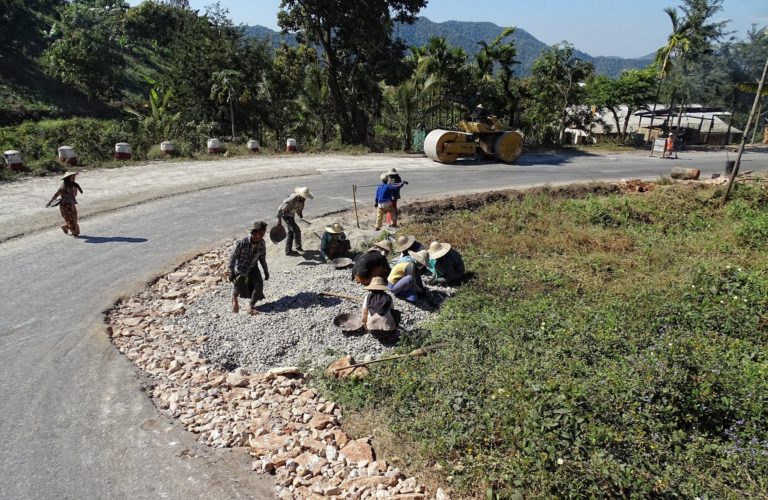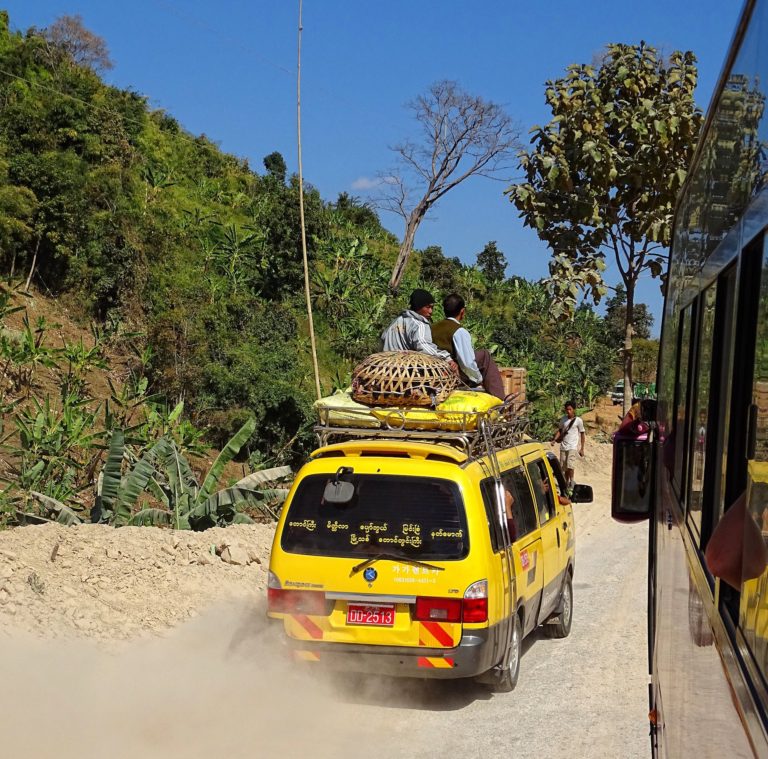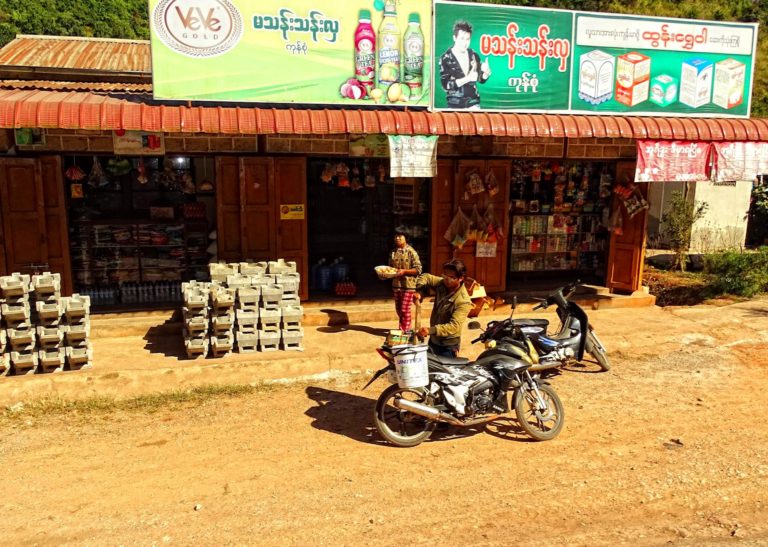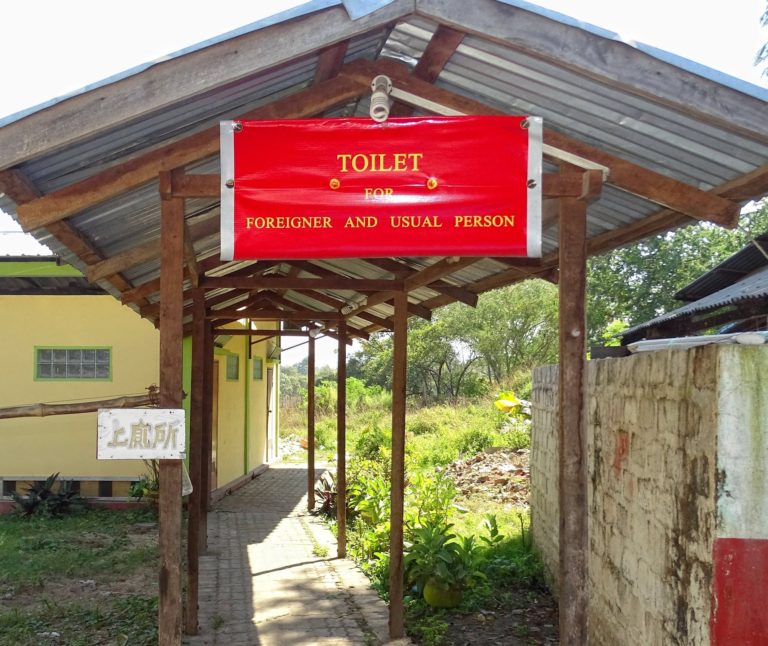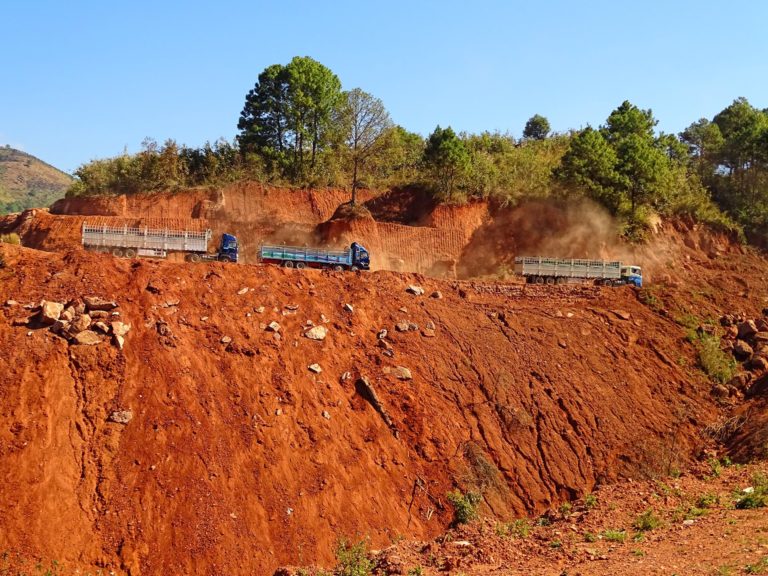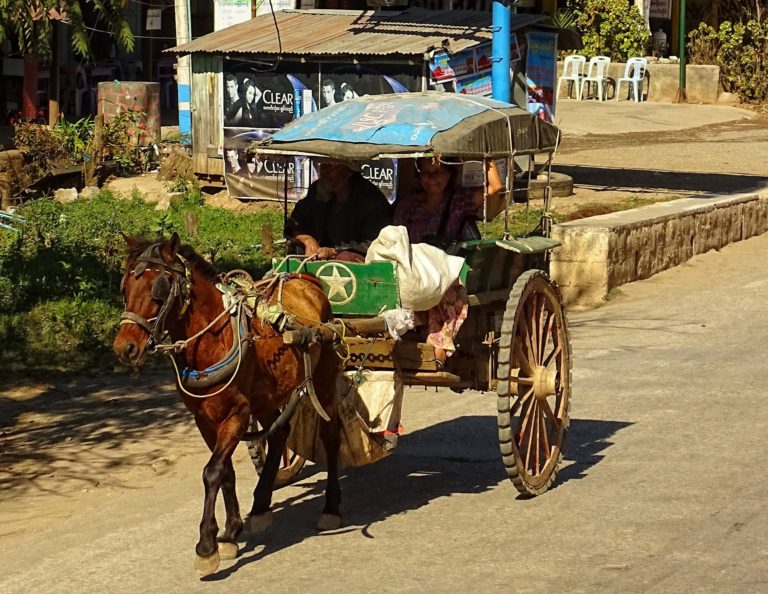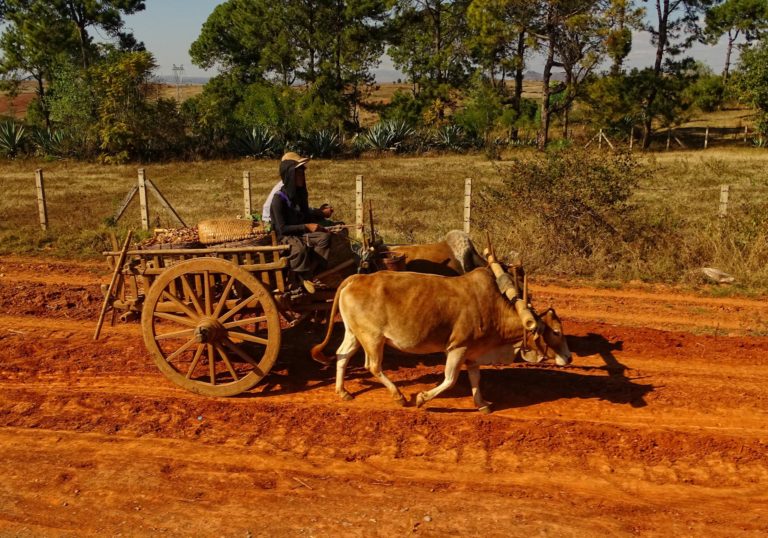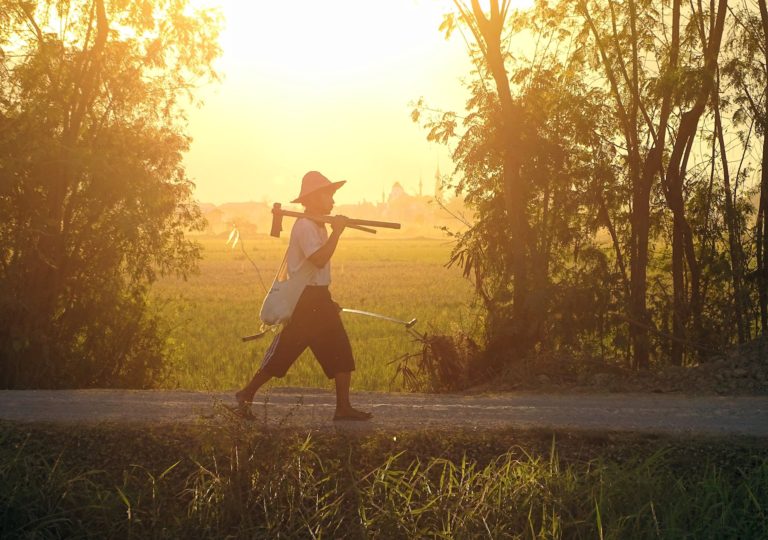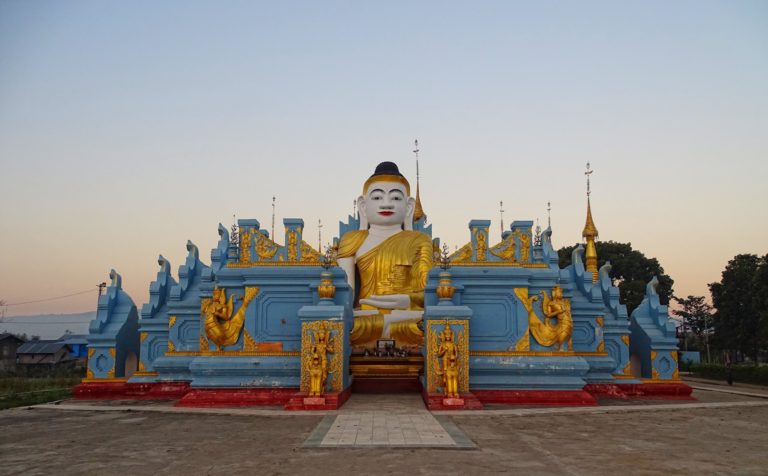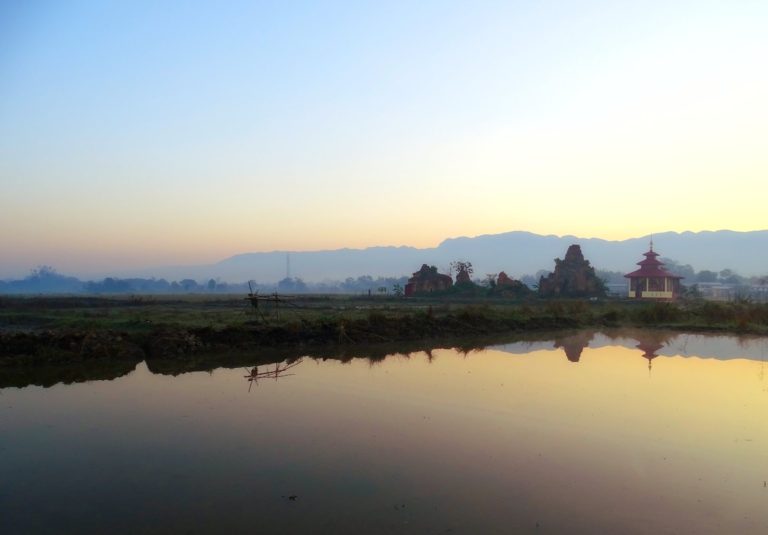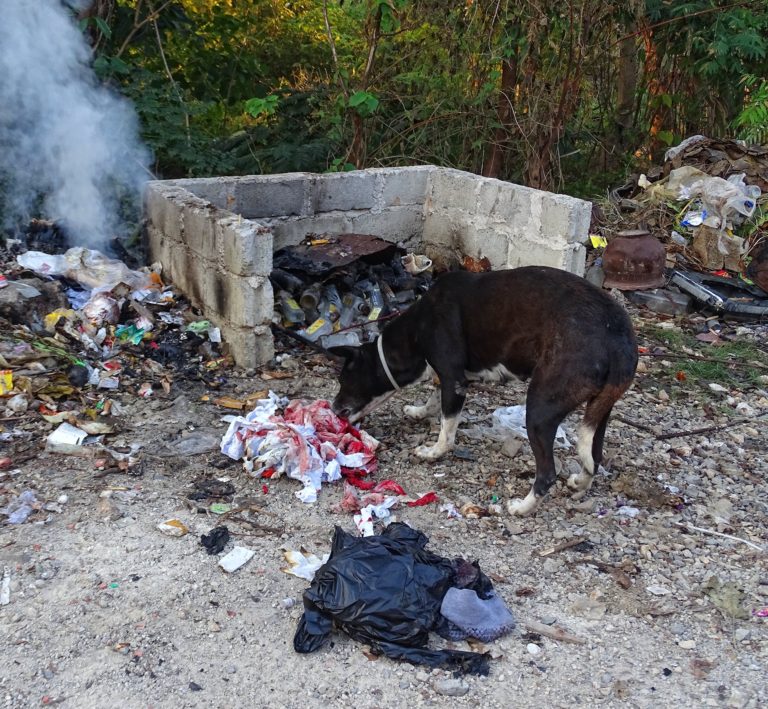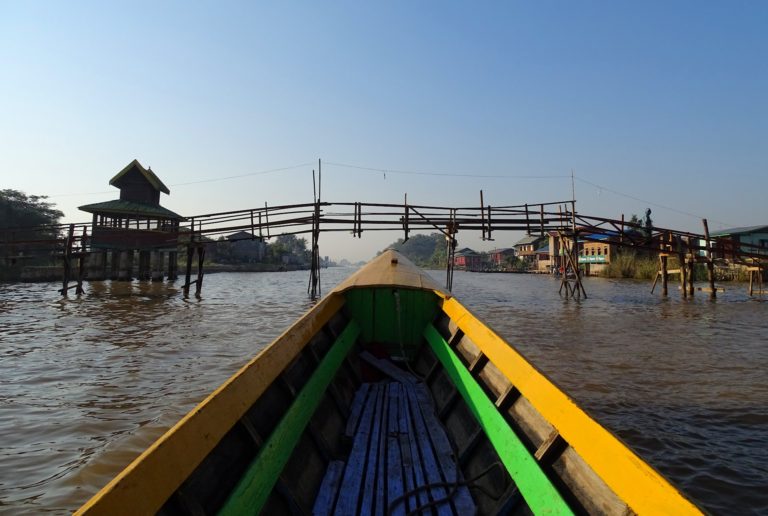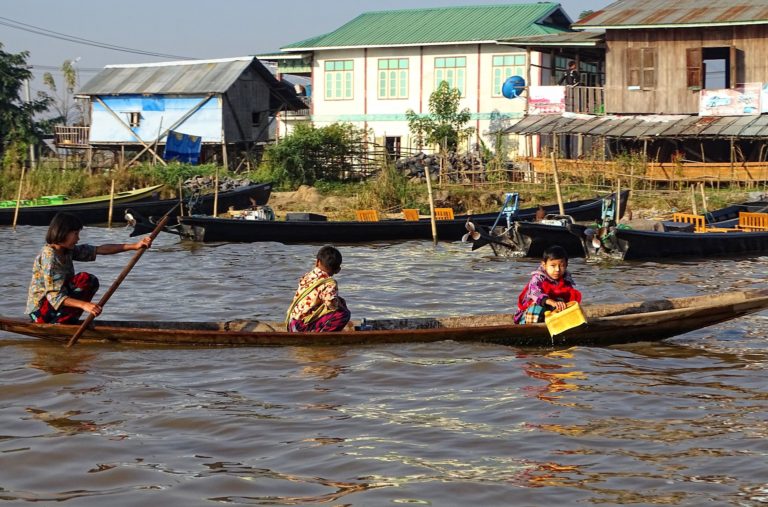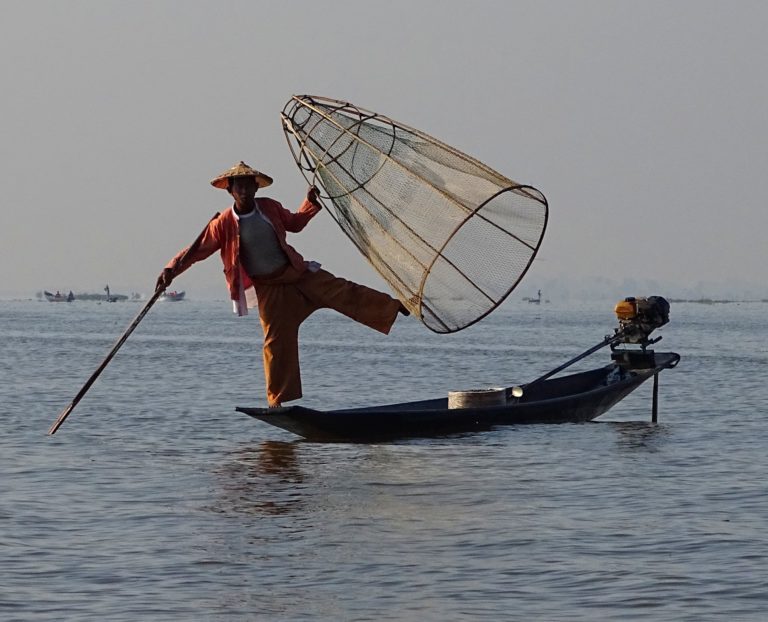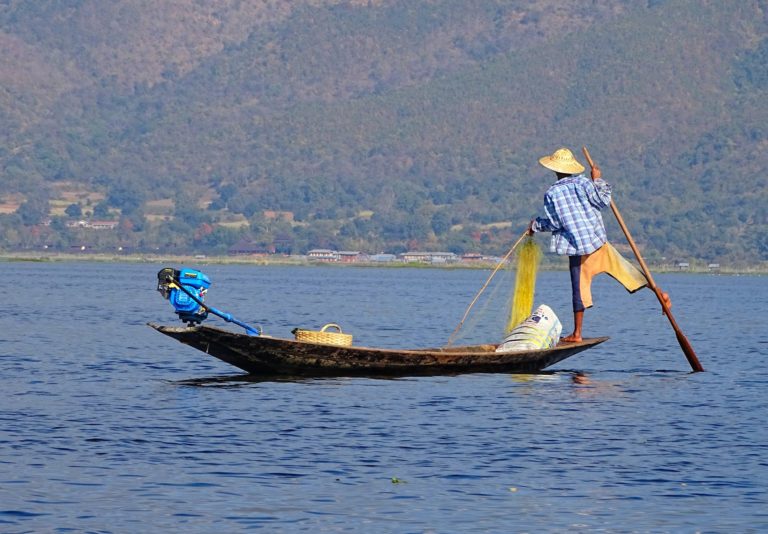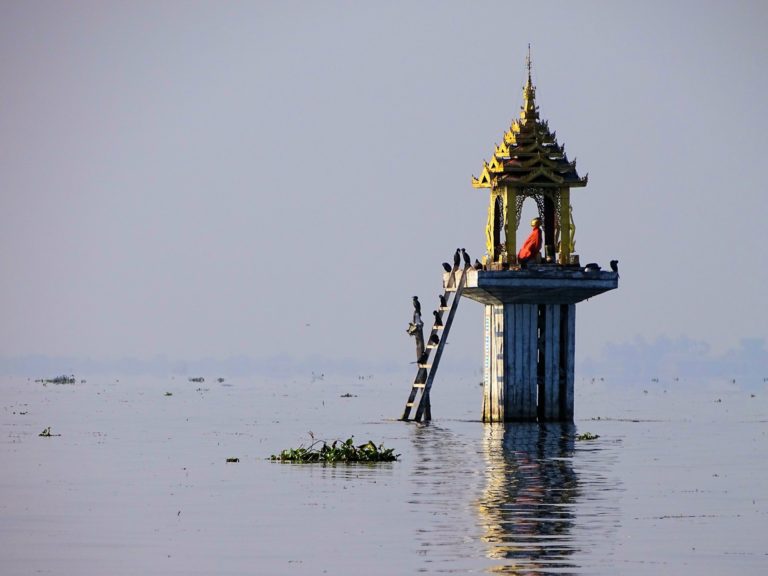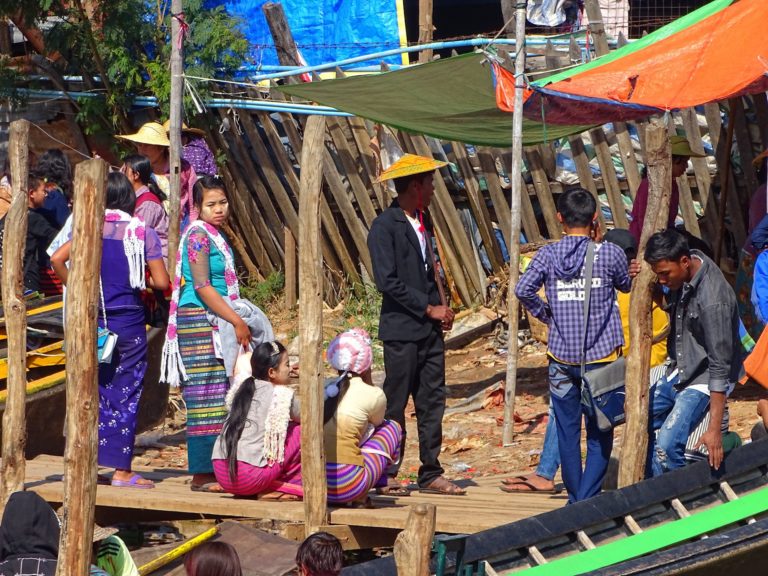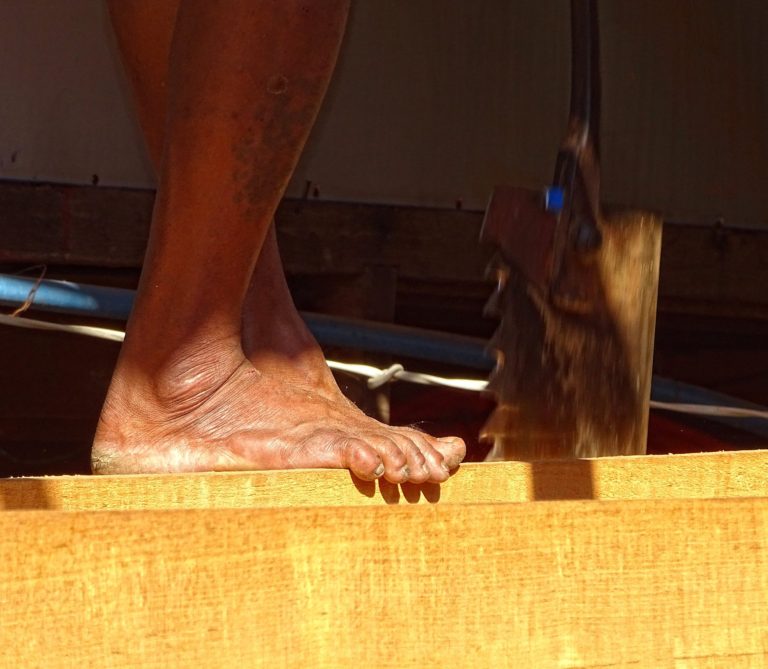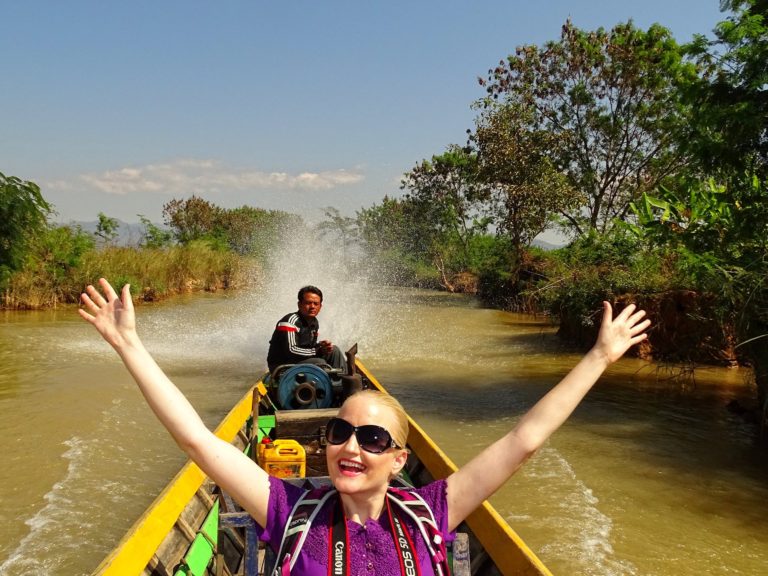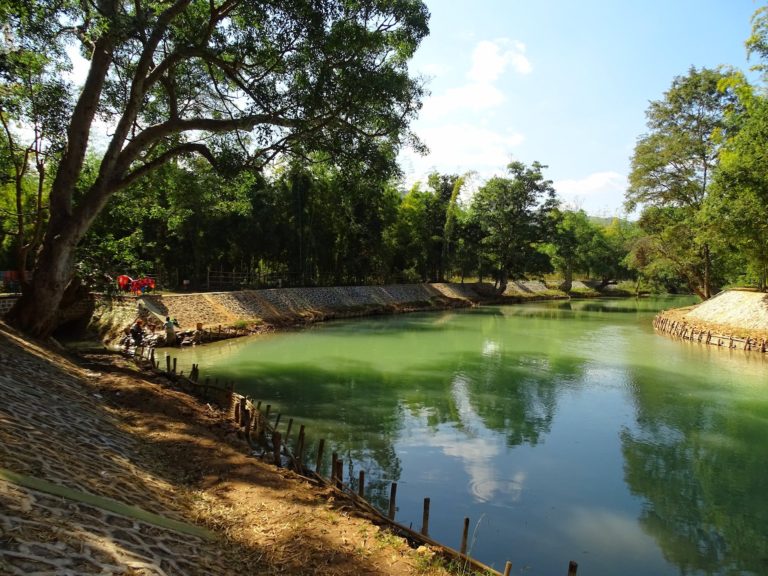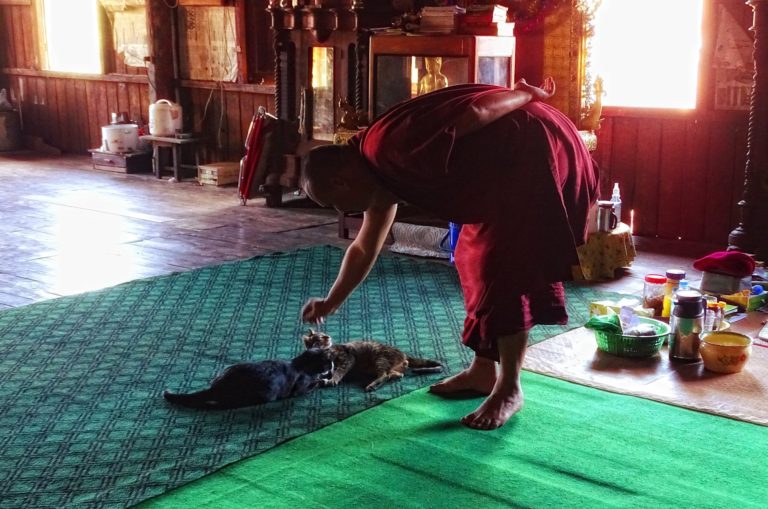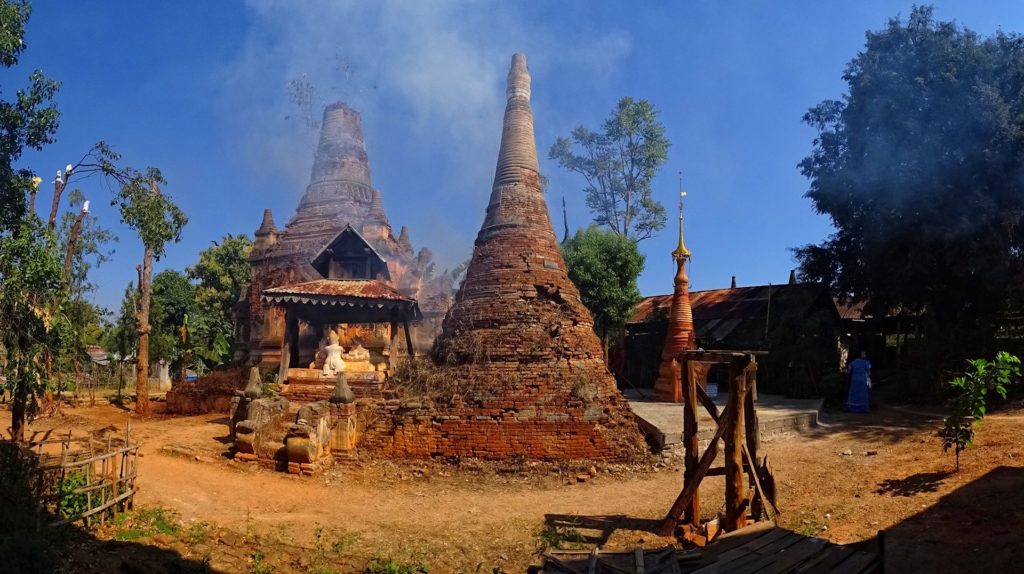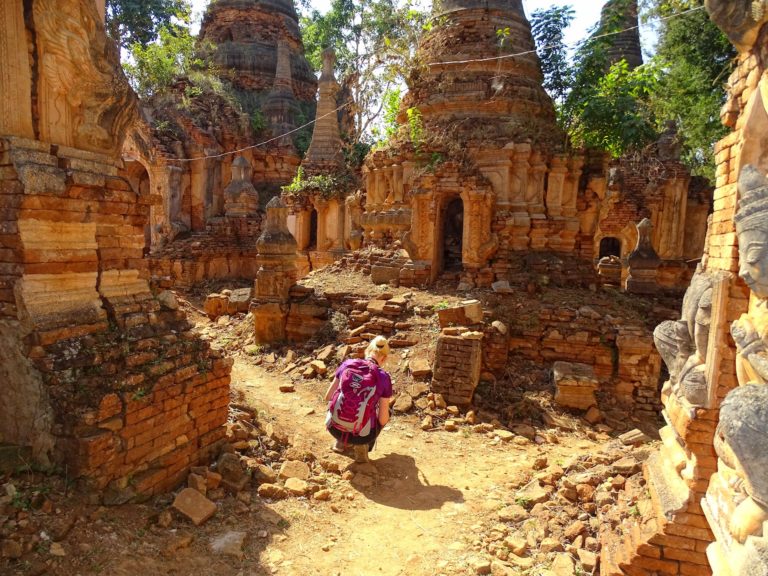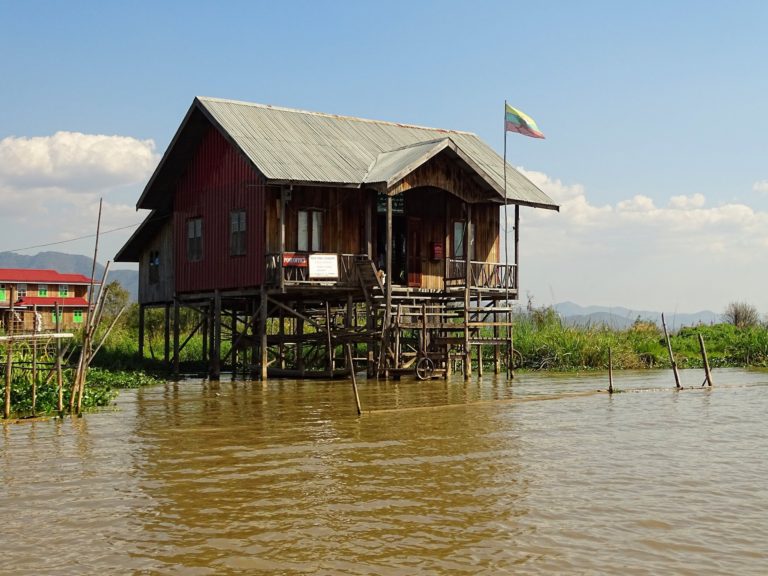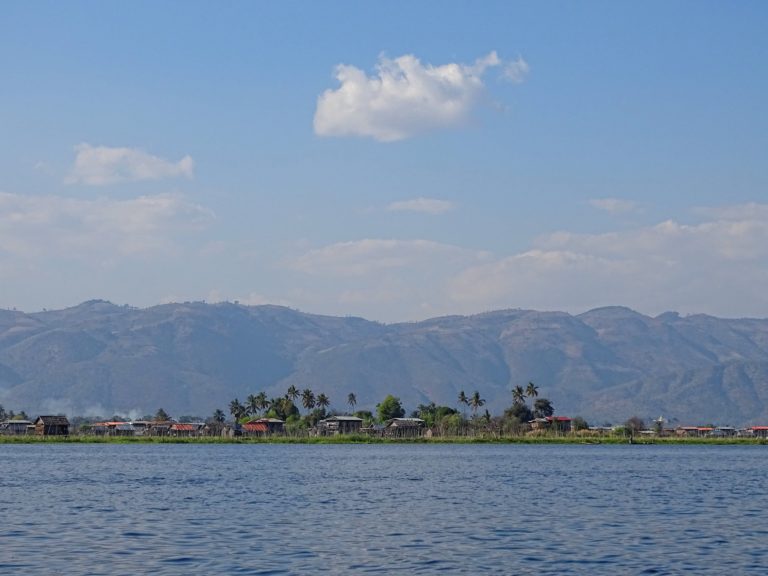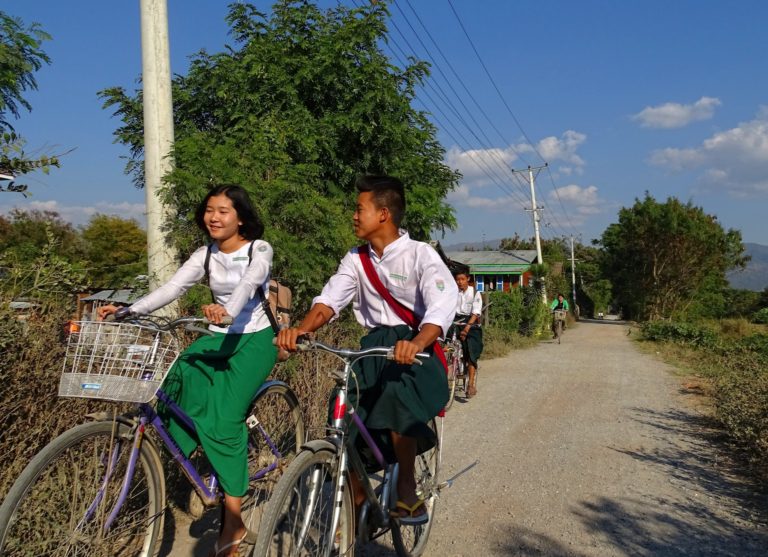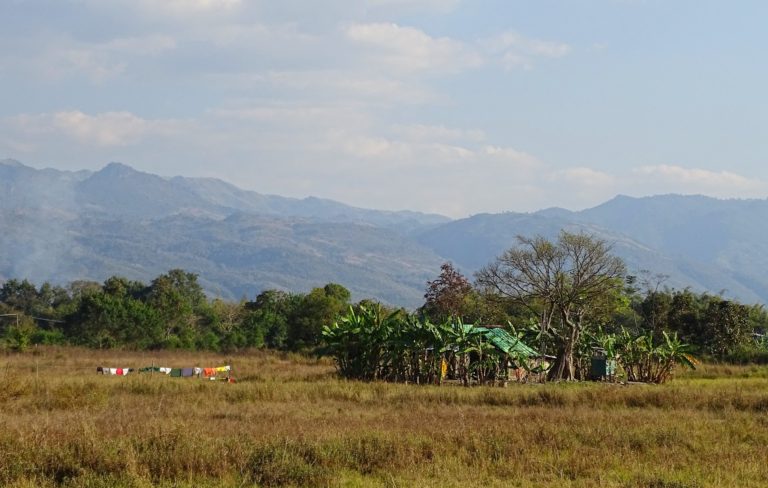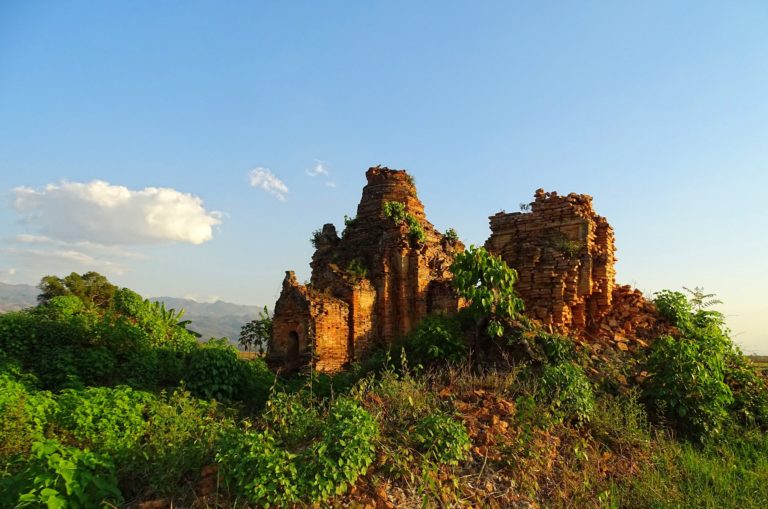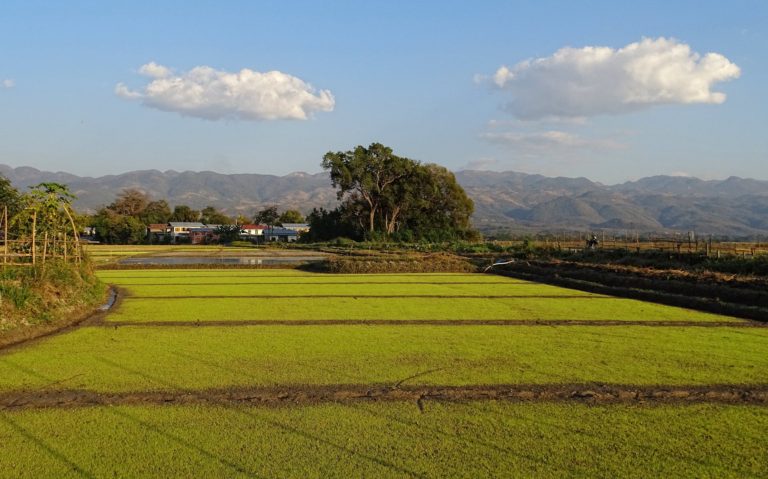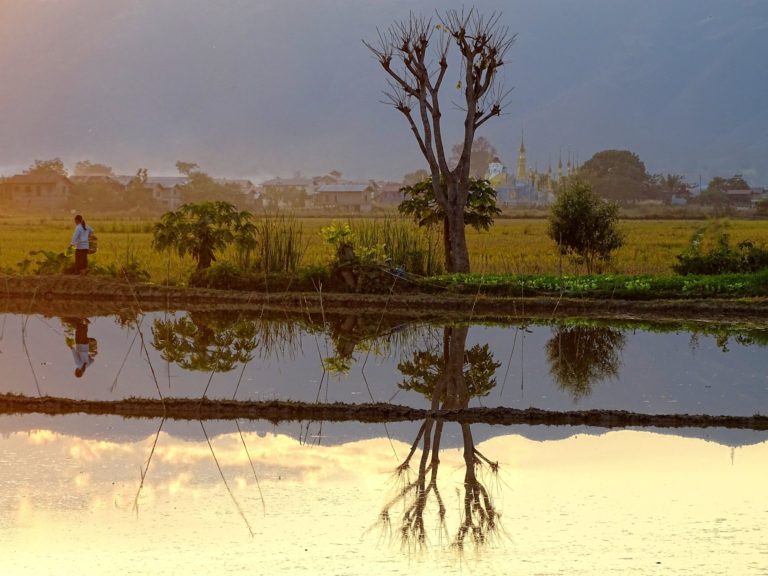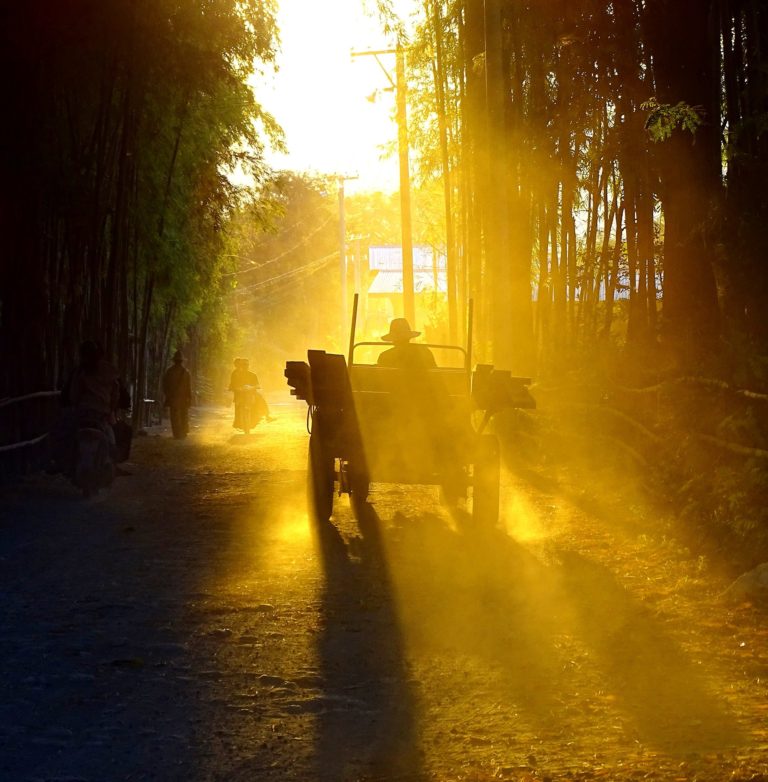After Bagan and Yangon, the most popular tourist destination in Myanmar is probably the relatively remote Inle Lake. The main town, Nyaung Shwe, is a great place to base yourself, whether you just want to be comfortable or you want to explore the “real” Myanmar. I’ll show you some of the main sights there.
We will arrive from Bagan, traveling for nine hours on a cheap bus. The view from our roof seats is great!
Just kidding. The bus was cheap, but not that cheap.
Here’s the view from my actual seat on the bus from Bagan.
“VIP” buses in Myanmar have wide seats with plenty of leg room. Per person we pay about the same for a full day on the bus as a taxi would have cost from Heho airport, the closest one to Inle Lake. Flying in is faster, but I actually enjoy to travel. To me a day spent on a bus is rarely a day wasted. Especially when I sit comfortably.
The road is being improved along much of our route, and the workers have a much harder time than their colleagues in many other countries. Men and women work side by side, crushing, carrying and placing stones for the foundation. The asphalt is also boiled manually on-site, in old oil barrels, by people who almost look like chefs as they stand by the fire.
The bus makes good speed on the semi-good road. That doesn’t prevent smaller vehicles with people and chicken on top from overtaking us.
The main road between Bagan and Inle Lake passes many small villages, where every shop is located within spitting distance from the road. We get a good view of what people shop for. Most shops don’t seem to be much specialized, but instead sell as many different items as they can possibly fit inside.
Wherever I go, I love to observe how every place puts its own spin on some universal basic style phenomenon. This posse looks particularly dashing in their skirt/cap/man-bag combo.
About halfway to Inle Lake, we’re treated to a toilet break.
Fortunately, I’m both a foreigner and a relatively usual person!
Some sections of the road do not look entirely safe, but it’s dry season, so we can marvel at the stunningly red dirt instead of worry about landslides.
Horse-drawn vehicles are still fairly common sights on the roads of Myanmar.
This child is not screaming in fear. It’s actually a yawn.
We often see whole families traveling on a single scooter. Helmets are optional.
More slow travelers. We don’t see many Teslas.

As the day comes to an end, we arrive in Nyaung Shwe, just in time for a sunset walk. It’s great to stretch our legs as we explore the rice paddy fields just outside town.
Nyaung Shwe itself is an almost city-like town, with chaotic roads, nice restaurants and trendy tourists.
Walk for ten minutes from the bubble tea cafes, and you find homes like this one, with an outside kitchen, a cow and a buffalo roaming the farm/garden, and concrete barriers to protect homegrown herbs from chickens.
After a day of hard work in the fields this farmer walks home, knowing that tomorrow there is more work to be done.
On the south-western edge of Nyaung Shwe we find the Kyaut Phyu Gyi pagoda.
No matter how poor a neighborhood is, they’re still able to pop up a nice, golden giant Buddha. I question their priorities somewhat, but it does look impressive.
Next morning we explore the area near our surprisingly good hotel with the cheesy name WEStay @ The Grand Nyaung Shwe Hotel. (They offer both private rooms and dorm beds, by the way!) The hour leading up to sunrise is nice and quiet, with views that perfectly set the stage for the rest of the day.
We pass the local hospital, and the scene here is less idyllic.
Street dogs feast upon human parts freshly removed from the body that grew them. Barks and sneers prevent me from learning the exact ingredients of this meal.
Today we’ll do what most visitors to Inle Lake do. We hire a local boatman to take us to various spots around the lake.
Leaving Nyaung Shwe, we see the first of many rickety bridges we’ll be passing under today.
In a village that literally is on a lake, it’s just natural that most transportation is done by boat. Here’s a mother making sure her children get to school safely.
This is the iconic photo from Inle Lake. The fishermen here are balance artists. They have a lot of practice, because even if you fall into the water, nothing bad is going to happen to you. The lake is very shallow almost everywhere, hence the flat boats.
When you see a man posing like this, you know it’s not really a fisherman. Instead, it’s someone who wants to be photographed tourists, for a small fee. That’s okay, take the photo, just know that they’re not having fun, they’re posing for you, so that they can make a living.
If you see a fisherman with his back to you and with a net in hand, then it’s the real deal. These guys are at least as skilled in balancing as the posers are, but they’re looking for fish, not for you.
Take note of how they both steady themselves and slowly move their boat around by using just an arm and a leg. This way they free up one hand to do actual fishing and handling of nets. It’s really impressive.
Just because there’s no ground to build a small temple on, that doesn’t mean you can’t do it. The lake is dotted with many shrines like this one. The cormorants go there a lot.
And here we are, in the middle of the lake, having a great time. Our guide speaks about as much English as Norwegian, but he’s plenty friendly and eager to show us around. It’s a wonderful world.
The next village doesn’t have streets, only canals. That doesn’t stop the stores from filling their fronts with signs selling everything from beer to mobile phone plans, with little in between.
It looks as if they simply decided that it was easier to dig canals than to build roads here.
In Ywama village we find the Phaung Daw Oo pagoda. Housing five ancient golden images of the Buddha, it’s the main monastery in the Inle Lake area. It sort of shows on the outside.
This village is great for some random wandering, just be prepared for the many bridges that look as if they will fall down at any moment.
Near the pagoda we encounter a wedding party. I love how Myanmar has its entirely own way to dress beautifully.
Also notice the yellow cosmetic many wear on their face and sometimes also the arms. It’s called thanaka. They wear it to look pretty, often in fantastic patterns, and also to protect the skin against the sun. As if that wasn’t enough, it also smells nice, almost like sandalwood.
A typical view in Ywama. Trails of dry mud lead down to the water, where there’s always one or more long, flat vessels lying around. Wherever you go, something edible grows in or near the water. This is bountiful land.
The local equivalent of an open-bed truck, transporting goods from one side of the village to the other. These mud bricks may soon become someone’s house. It’s fascinating to watch the man effortlessly paddling and punting the heavy load through the canal, with one hand free to wave at us.
We stop at a restaurant for lunch. Part South-East Asia, part Waterworld, the view from our table complements the food nicely.
This sign at the school in the village wins me over. Myanmar has the squiggliest alphabet of them all. I love it.
I’m no fan of permanent alterations of the body of any kind. The “long neck women” in this region definitely falls into that category. Yet, at some level I am thrilled to unexpectedly see these women, who no doubt are here mainly to attract tourists.
I recall my own fascination from back when I was a child and read about this phenomenon. It’s not a new concept that was invented for tourism, but it’s still something that should be done away with. However, I see little wrong in having a gawk at these adult and old women, as long as me being here doesn’t contribute to a continuation of the custom.
So, yeah, I’m a bit conflicted about myself. It probably fascinates me enough that I think I am glad to have seen it with my own eyes. It would be good if you didn’t do the same, says the hypocrite.
Another thing they might want to change around here, are the working conditions of the men that build boats locally. Introducing some kind of factory worker shoes wouldn’t hurt. This guy is sawing like mad, moving his foot back and forth just inches from a blade that rapidly goes up and down. He’s not a young man, and he still has all his limbs and toes, so I’m sure he knows what he’s doing. Still, my stomach turns as I see this.
We leave the lake proper and head up a stream. It reminds me about scenes from old Vietnam War movies, only without the prospect of being blown up at any moment. I love the sweet smell of fresh lake air in the morning!
A good six kilometers from the lake, we dock in Nyaung Ohak. This is far enough upstream that the water is not brown, but still a lovely green. It makes everything look even nicer.
Our main reason for making this detour is to visit a couple of ancient monasteries. One of them is mainly red brick ruins, while the other one is white, golden and shiny.
Whichever one you visit, you’ll probably meet monks that spend much of their time petting cats. We see them everywhere around the lake. I’m not sure if it’s a tourist ploy, or if they genuinely love cats. Or why not both?
The older pagodas and stupas in the village have been reduced to piles of bricks. When we look closer, we find many amazingly detailed stone carvings scattered between them.
Locals walk through here all the time with their vegetables, laundry and chickens, living what goes for everyday life around here. As long as we behave respectfully, they don’t mind us being there, I hope and sense.
If you want to bring out the Indiana Jones in you, this is a great place to do that.
And if you want to send a postcard, this is where you go.
I’ve never seen a post office on stilts before, but of course there’s one here. I guess the postmen in this area don’t have to worry much about dogs.
Inle Lake often feels like a touristy place, but there seem to be more people ready to serve tourists than there are actual tourists. In markets like this one, local merchants sell more “normal” garments than souvenir t-shirts, that’s for sure.
Personally, and now I set the government’s obvious desire to earn foreign currency aside, I think tourism will contribute more good than bad for the people here. If you come, buy at least a few little somethings from what appears to be friendly locals just out to make a living. If it helps them make money, great. If it adds more to the treasury of a government that still is responsible for some pretty bad things, the damage you do will at least be minimal.
Inle Lake is obviously a flat place, but all around it there are cozy-looking hills, perfect for some easy hiking.
If you’re into that, you can easily find a guide in Nyaung Shwe that can take you to various interesting small villages up there. They’ll be happy to see you.
As we get close to sunset, there’s a rush of boats returning to Nyaung Shwe from all around the lake. Many of them carry tourists, many do not. This is just how everyone gets around here.
Back on land, school has clearly just ended. We see students happily heading home everywhere.
A skirt-like garment, longyi, is worn by nearly everyone. It’s a most practical garment that Myanmar has adopted from the Malays. It keeps your legs cool, and it can quickly be converted into a carrying tool, or even into shorts for playing sports. We also see men and women bathe and clean themselves while wearing this. When they’re done and get out of the water, they just step into a dry longyi and drop the wet one, without ever exposing any private parts.
Many of the people we see area on their way to homes like this one. I don’t at all want to romanticize these living conditions, but I for one would not mind having at least a weekend getaway place of this kind. It looks like a place where I could immediately wind down after a busy week, not so different from what an average cabin in the woods in Norway used to be like, not too long ago.
I don’t understand the dynamics that lead to this, but while the buddhists of Myanmar seem eager to build pagodas, they clearly do not enjoy maintaining them. In short, they are human.
I always enjoy some good ruins, especially around sunset and when I carry a camera. Walking around the outskirts of Nyaung Shwe in the afternoon with my Sony is heaven to me.
Here’s a typical scene from the banks of Inle Lake; paddy fields everywhere, and the modest dwellings of their farmers right next to them.
Looking at a field never fails to bring peace to my mind. And if the fields are mirrored in still water, that doesn’t make them any less attractive.
(Unless there’s a malaria outbreak going on, of course.)
For some reason, this water appears to be in need of watering. I’m confident this guy knows what he’s doing. It just looks a little bit unnecessary, and a lot like hard work.
The warmth from the colors brought on by the sunset, gets an extra boost from all the dust that is whirled up into the air by scooters, carts and pedestrians.
This final image shows you the view from Nyaung Shwe towards the sunset in the west.
I hope you have enjoyed coming along on my quick visit to Inle Lake. If you ever go to Myanmar, try to make some room for this place on your itinerary, ideally for at least three full days. You may not find it as spectacular as Bagan, but it will likely bring you lots of joy and give you much hope for the country.
How to get to Inle Lake
Below you find some general advice on popular routes that will get you to Inle Lake. For your convenience, I have also included a form that lets you search for and buy tickets on-line. It works for an astonishing number of places across Asia, and covers both planes, buses, trains and some boats.
If you buy tickets through this form, I will receive a small commission. Keep in mind that you can usually get the tickets cheaper by buying them straight from the ticket offices of the transportation companies, although it might involve considerable more walking and hassle than doing it from your computer or mobile phone.
If you have any trouble whatsoever with tickets bought through the form below, please send me a message detailing the issue. You book things on-line completely at your own risk, of course, but I’ll be happy to try to help out if I can.
Get there by plane
If you’re pressed for time, you can fly via Yangon or Mandalay to Heho airport, less than an hour away from the lake. If you do this, you’ll get the least stress and the best price on transport into Nyaung Shwe by booking accommodation beforehand and ask them if they can pick you up from the airport.
Get there by land
If you have the time to travel overland, you can get cheap and relatively comfortable direct buses from Yangon (13 hours), Mandalay (10 hours) and Bagan (9 hours). Note that you can NOT enter the eastern parts of Myanmar from Thailand and travel by bus to Inle Lake. The region you would have to travel through is closed for tourists, for various good reasons.
As always in South-East Asia, make sure you bring warm clothing in case the air-conditioning is set to crazy cold. Also, bring earplugs. The entertainment system on-board is likely audibly broken, yet noisy.


